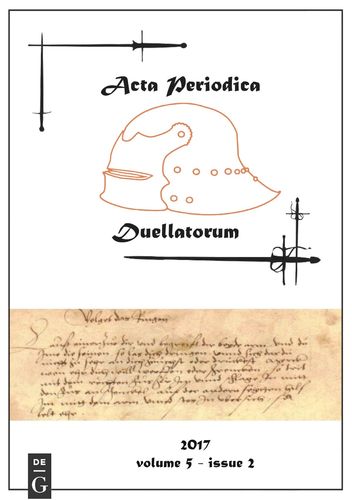The typological debates around Le Jeu de la Hache (BnF MS Français 1996) and their stakes for HEMA practice
Keywords:
Ms. I.33, Sword and Buckler, 13th and 14th century dress, female fencerAbstract
Le Jeu de la Hache displays a fighting-system with the pollaxe in armour, but the weapon is never described with precision, which leads to debates regarding its typology – cutting edge or hammer/raven’s beak? Through a semi-quantitative survey, we tried to offer an overview of current HEMA practice around this specific source, with special emphasis on the typological question. Despite the rather narrow scope of the inquiry, some trends emerge. Besides the various choices regarding terminology and sources, we can underline the variety of materials used for the simulators: rubber components («hammer» typology) are leading, but wood and metal are also used, for both typologies. Advantages and disadvantages of each rely on the articulation of safety and realism dimensions, and the dangerousness inherent to this kind of weapon is largely highlighted. Even if most respondents declare not to be familiar with the typological debates amongst historians, it was usually mentioned to them during their practice. Only a minority has taken part in experiments in order to bring some elements of answer, but seldom in a systematic way. Therefore, a praxeological experimental approach could bring up new data, but is not devoid of difficulties, for instance the necessity of wearing armour.Downloads
Download data is not yet available.
Downloads
Published
2017-12-18
Issue
Section
Articles
License
Copyright (c) 2017 Anne-Caroline Le Coultre

This work is licensed under a Creative Commons Attribution-NonCommercial-NoDerivatives 4.0 International License.
How to Cite
Le Coultre, A.-C. (2017). The typological debates around Le Jeu de la Hache (BnF MS Français 1996) and their stakes for HEMA practice. Acta Periodica Duellatorum, 5(2), 97-114. https://bop.unibe.ch/apd/article/view/6862



